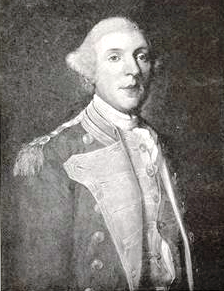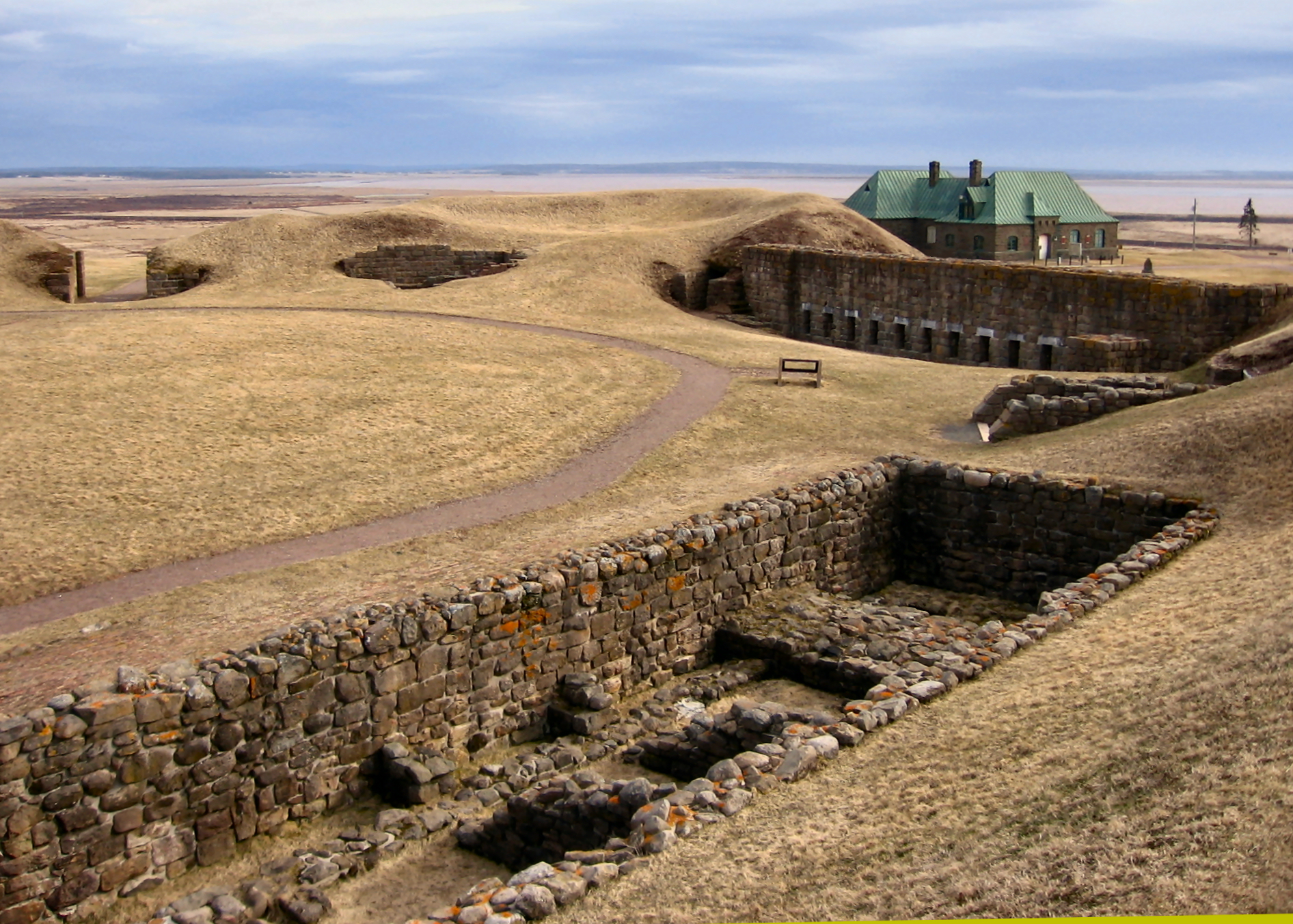|
Fort Frederick (Saint John, New Brunswick)
Fort Frederick (1758—1777, earlier Fort Menagoueche, superseded by Fort Howe in 1777) was a British fort at what is now Saint John, New Brunswick, Canada. It was built during the St. John River Campaign of the French and Indian War. It was one of three significant forts which the British built on the major rivers in the Northeast to cut off the natives' water way to the ocean to prevent attacks on the British settlers (see also Fort Halifax and Fort Pownall). On September 13, 1758, Robert Monckton and a strong force of regulars and rangers (Gorham's Rangers, Danks' Rangers and Rogers' Rangers) left Halifax, and arrived at the mouth of the St. John River a week later. He established a new base of operations by reconstructing Fort Menagoueche, which had been destroyed in 1755, and which he renamed Fort Frederick.Roger Sarty and Doug Knight. ''Saint John Fortifications''. 2003. p. 31; ; F. Thériault, p. 11 Establishing Fort Frederick allowed the British to virtually cut ... [...More Info...] [...Related Items...] OR: [Wikipedia] [Google] [Baidu] |
Gorham's Rangers
Gorham's Rangers was one of the most famous and effective ranger units raised in colonial North America. Formed by John Gorham, the unit served as the prototype for many subsequent ranger forces, including the better known Rogers' Rangers. The unit started out as a Massachusetts provincial auxiliary company, which means it was not part of the province's normal militia system. Recruited in the summer of 1744 at the start of King George's War, Governor William Shirley ordered the unit raised as reinforcements for the then-besieged British garrison at Fort Anne in Annapolis Royal. The unit was primarily used to secure British control in Nova Scotia, whose population consisted primarily of hostile Acadian and Mi'kmaq. Initially a sixty-man all- Indian company led by British officers, the original Native American members of the unit were gradually replaced by Anglo-Americans and recent Scots and Irish immigrants and were a minority in the unit by the mid-1750s. The company we ... [...More Info...] [...Related Items...] OR: [Wikipedia] [Google] [Baidu] |
Roger Morris (British Army Officer)
Roger Morris (28 January 1727 – 13 September 1794) was a colonel in the British Army who fought in the French and Indian War. He was married to Mary Philipse, middle daughter of Frederick Philipse, second Lord of the Philipsburg Manor, and a possible love interest of George Washington. She owned a one-third share of the Philipse Patent, a vast landed estate on the Hudson River which later became Putnam County, New York. Following their marriage Morris had a large country estate named ''Mount Morris'' (today the Morris-Jumel Mansion) built in northern Manhattan between the Hudson and Harlem rivers in what is now Washington Heights. Life and career Morris was born in England on 28 January 1727, the third son of Roger Morris of Netherby, in the North Riding of Yorkshire, and Mary Jackson, the fourth daughter of Sir Peter Jackson. On 13 September 1745, he obtained a commission in the 48th Regiment of Foot. The regiment served at Falkirk and Culloden, and in Flande ... [...More Info...] [...Related Items...] OR: [Wikipedia] [Google] [Baidu] |
Gilfred Studholme
Gilfred Studholme (1740–1792) was a British military officer who commanded forces on the Saint John River, Nova Scotia during the American Revolution. He was commissioned in the Loyal Nova Scotia Volunteers at the outbreak of the war and later served as a captain in the Royal Fencible Americans and promoted to Brigade-Major. Studholme rescued Joseph Gorham in pushing back the American attack in the Battle of Fort Cumberland. After the St. John River expedition, Studholme replaced Fort Frederick with a fort he built on higher ground, which was named Fort Howe. At this fort, Studholme was helpful to Michael Francklin in ensuring peace with the Mi'kmaq and Malecites (1780). After the war, he was appointed by Governor John Parr to "the care and superintending" of the loyalist settlers on the Saint John. He was eventually named to the first Executive Council of the new province of New Brunswick (1784). Legacy * namesake of Studholm Parish, New Brunswick See also *Military ... [...More Info...] [...Related Items...] OR: [Wikipedia] [Google] [Baidu] |
Raid On St
Raid, RAID or Raids may refer to: Attack * Raid (military), a sudden attack behind the enemy's lines without the intention of holding ground * Corporate raid, a type of hostile takeover in business * Panty raid, a prankish raid by male college students on the living quarters of female students to steal panties as trophies * Police raid, a police action involving the entering of a house with the intent to capture personnel or evidence, often taking place early in the morning *Union raid, when an outsider trade union takes over the membership of an existing union Arts, entertainment, and media Films * ''Raid'' (1947 film), an East German film * ''Raid'' (2003 film), a 2003 Finnish film * ''Raid'' (2018 film), an Indian period crime thriller Gaming * Raid (gaming), a type of mission in a video game where a large number of people combine forces to defeat a powerful enemy * ''Raid'' (video game), a Nintendo Entertainment System title released by Sachen in 1989 * ''Raid over Mosco ... [...More Info...] [...Related Items...] OR: [Wikipedia] [Google] [Baidu] |
American Revolution
The American Revolution was an ideological and political revolution that occurred in British America between 1765 and 1791. The Americans in the Thirteen Colonies formed independent states that defeated the British in the American Revolutionary War (1775–1783), gaining independence from the British Crown and establishing the United States of America as the first nation-state founded on Enlightenment principles of liberal democracy. American colonists objected to being taxed by the Parliament of Great Britain, a body in which they had no direct representation. Before the 1760s, Britain's American colonies had enjoyed a high level of autonomy in their internal affairs, which were locally governed by colonial legislatures. During the 1760s, however, the British Parliament passed a number of acts that were intended to bring the American colonies under more direct rule from the British metropole and increasingly intertwine the economies of the colonies with those of Brit ... [...More Info...] [...Related Items...] OR: [Wikipedia] [Google] [Baidu] |
Fort William Henry (Pemaquid Beach, Maine)
Fort William Henry is located in the village of New Harbor in the town of Bristol, Maine. The fort was, in its time, the largest in New England. The fort was originally built in 1692 but destroyed four years later by New France in the Siege of Pemaquid (1696). A reconstruction was built in 1908. The fort was added to the National Register of Historic Places on December 1, 1969. Fort William Henry is now operated as a museum about the fort's history. Fort William Henry is part of the Colonial Pemaquid State Historic Site, which also includes the archaeological excavations of 17th and 18th century village buildings and a museum with excavated artifacts found on the site, including musket balls, coins, pottery and early hardware. History The first fort on this site was Abraham Shurte's Fort (1630–1633), a palisaded trading post that was burned down by pirates under Dixie Bull. The next fort on the site was Fort Pemaquid (1633–1676), which was destroyed in the Northwest Coast ... [...More Info...] [...Related Items...] OR: [Wikipedia] [Google] [Baidu] |
Rogers' Rangers
Rogers' Rangers was a company of soldiers from the Province of New Hampshire raised by Major Robert Rogers and attached to the British Army during the Seven Years' War (French and Indian War). The unit was quickly adopted into the British army as an independent ranger company. Robert Rogers trained and commanded the rapidly deployed light infantry force, which was tasked mainly with reconnaissance as well as conducting special operations against distant targets. Their tactics were built on earlier colonial precedents and were codified for the first time by Rogers as his 28 "Rules of Ranging". The tactics proved remarkably effective, so much so that the initial company was expanded into a ranging corps of more than a dozen companies (containing as many as 1,200–1,400 men at its peak). The ranger corps became the chief scouting arm of British Crown forces by the late 1750s. The British forces in America valued Rogers' Rangers for their ability to gather intelligence about the ... [...More Info...] [...Related Items...] OR: [Wikipedia] [Google] [Baidu] |
Danks' Rangers
Danks' Rangers was a ranger unit raised in colonial North America and led by Captain Benoni Danks (ca. 1716-1776). It was modeled on and often served alongside of the better known Gorham's Rangers. The unit was recruited in early 1756, during the early stages of the Seven Years' War / French and Indian War, from among men serving in two then-disbanding New England provincial battalions stationed in Nova Scotia. Raised to help protect the British garrison on the Isthmus of Chignecto and secure the area after the siege of Fort Beauséjour, their principle foes were Acadian and Mi'kmaq Indians conducting a low-level insurgency against the British authorities in Nova Scotia. Their primary area of operations was the northwestern portion of Nova Scotia and the north and eastern parts of what would later become New Brunswick. The unit averaged a little over one hundred men for much of its existence, although it seems to have been augmented to 125 for the attack on Havana in 1762 ... [...More Info...] [...Related Items...] OR: [Wikipedia] [Google] [Baidu] |
Robert Monckton
Lieutenant-General Robert Monckton (24 June 1726 – 21 May 1782) was an officer of the British Army and colonial administrator in British North America. He had a distinguished military and political career, being second in command to General James Wolfe at the battle of Quebec and later being named the Governor of the Province of New York. Monckton is also remembered for his role in a number of other important events in the French and Indian War (the North American theatre of the Seven Years' War), most notably the capture of Fort Beauséjour in Acadia, and the island of Martinique in the West Indies, as well as for his role in the deportation of the Acadians from British controlled Nova Scotia and also from French-controlled Acadia (present-day New Brunswick). The city of Moncton, New Brunswick, (about west of Fort Beauséjour) and Fort Monckton in Port Elgin, New Brunswick, are named for him. A second more important Fort Monckton in Portsmouth, England, is also named for h ... [...More Info...] [...Related Items...] OR: [Wikipedia] [Google] [Baidu] |
Fort Frederick, St
A fortification is a military construction or building designed for the defense of territories in warfare, and is also used to establish rule in a region during peacetime. The term is derived from Latin ''fortis'' ("strong") and ''facere'' ("to make"). From very early history to modern times, defensive walls have often been necessary for cities to survive in an ever-changing world of invasion and conquest. Some settlements in the Indus Valley civilization were the first small cities to be fortified. In ancient Greece, large stone walls had been built in Mycenaean Greece, such as the ancient site of Mycenae (famous for the huge stone blocks of its 'cyclopean' walls). A Greek '' phrourion'' was a fortified collection of buildings used as a military garrison, and is the equivalent of the Roman castellum or English fortress. These constructions mainly served the purpose of a watch tower, to guard certain roads, passes, and borders. Though smaller than a real fortress, they acted ... [...More Info...] [...Related Items...] OR: [Wikipedia] [Google] [Baidu] |



